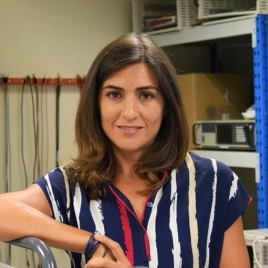Microwave Photonics 2018
A special issue of Applied Sciences (ISSN 2076-3417). This special issue belongs to the section "Optics and Lasers".
Deadline for manuscript submissions: closed (30 November 2018) | Viewed by 34085
Special Issue Editors
Interests: radiofrequency signal processing; fiber-wireless communications; space-division multiplexing
Interests: microwave photonics; biomimetic photonics; neuromorphic photonics; fiber optic sensors
Special Issues, Collections and Topics in MDPI journals
Special Issue Information
Dear Colleagues,
Bringing together the worlds of radiofrequency and optics engineering, the interdisciplinary field of Microwave Photonics (MWP) pursues the generation, processing, and distribution of microwave and millimeter-wave signals by photonic means. In comparison to traditional microwave technologies, MWP brings unique advantages inherent to photonics, such as low loss (independent of the radio frequency), high bandwidth or immunity to electromagnetic interference. In addition, it enables key processing features, such as fast tunability and reconfigurability, which are very complex or even impossible to achieve using conventional electronic approaches. These attractive properties are behind the increasing interest from both the research community and the industry experienced over the last two decades in various applications areas. In telecommunication networks, MWP enables distributed antenna and radio-over fiber systems, where broadband microwave and millimeter-wave signals are delivered from/to a central office to/from a variety of base stations with limited distortion as well as very low and frequency independent losses. In signal processing, MWP systems allow tunable and reconfigurable signal filtering and beamsteering of radiofrequency signals; while photonic analogue-to-digital converters bring the possibility of digitizing broadband signals at THz sampling rate. MWP allows as well the implementation of very versatile RF signal generators and optoelectronic oscillators spanning from ultrawideband to millimeter-wave signals.
Apart from the considerable added value that MWP brings to traditional microwave and radiofrequency systems, this interdisciplinary field holds a promising future in a myriad of emerging areas, such as the Internet of Things, medical imaging systems using Terahertz waves, optical coherence tomography, distributed sensing, wireless and body personal area networks, as well as converged fiber-wireless broadband access networks for 5G communications.
This Special Issue will address the current progress and latest breakthroughs in “Microwave Photonics”, covering among others the topics listed below. Both original research papers and review articles are welcome.
Dr. Ivana Gasulla
Dr. Mable P. Fok
Guest Editors
Manuscript Submission Information
Manuscripts should be submitted online at www.mdpi.com by registering and logging in to this website. Once you are registered, click here to go to the submission form. Manuscripts can be submitted until the deadline. All submissions that pass pre-check are peer-reviewed. Accepted papers will be published continuously in the journal (as soon as accepted) and will be listed together on the special issue website. Research articles, review articles as well as short communications are invited. For planned papers, a title and short abstract (about 100 words) can be sent to the Editorial Office for announcement on this website.
Submitted manuscripts should not have been published previously, nor be under consideration for publication elsewhere (except conference proceedings papers). All manuscripts are thoroughly refereed through a single-blind peer-review process. A guide for authors and other relevant information for submission of manuscripts is available on the Instructions for Authors page. Applied Sciences is an international peer-reviewed open access semimonthly journal published by MDPI.
Please visit the Instructions for Authors page before submitting a manuscript. The Article Processing Charge (APC) for publication in this open access journal is 2400 CHF (Swiss Francs). Submitted papers should be well formatted and use good English. Authors may use MDPI's English editing service prior to publication or during author revisions.
Keywords
- Fiber-wireless communications and 5G
- Radiofrequency signal processing, sensing, and measurements
- Arbitrary microwave waveform generation
- Optoelectronic oscillation
- Microwave signal distribution
- Integrated microwave photonics
- Terahertz photonics and applications
- Novel applications of microwave photonics






